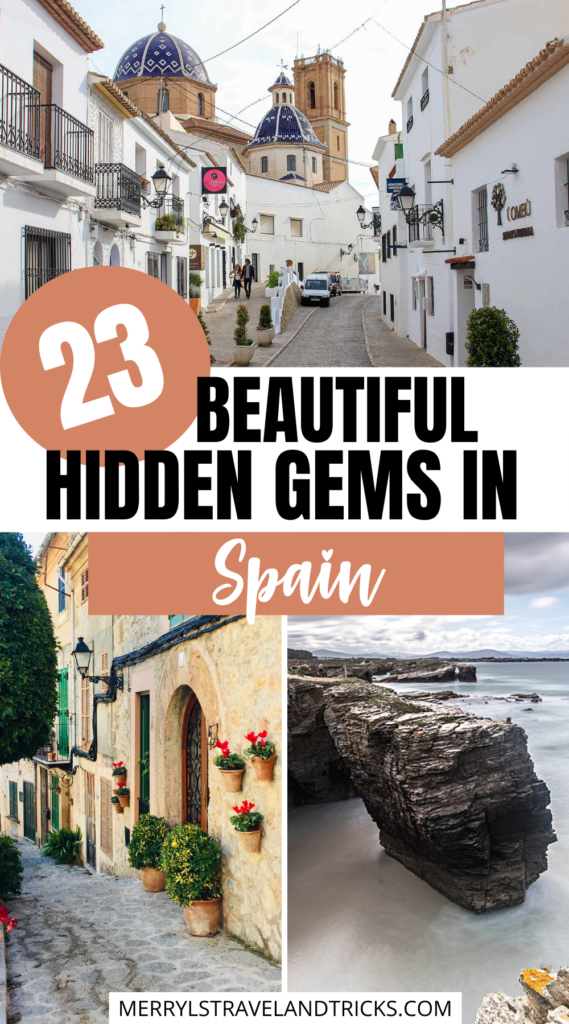24 Hidden Gems in Spain Off-The-Beaten Path
Spain is a country that is visited by millions of tourists every year. It has 17 autonomous regions, each with diverse geography and cultures. While many tourists prefer visiting the main cities like Barcelona, Madrid and Ibiza, the country also has numerous secret spots to explore that are equally beautiful. You can opt to visit them on your own or as a part of a small group tour of Spain. If you’re looking to visit some of these during your visit to the country, here are 23 hidden gems in Spain off-the-beaten path to choose from.
Valldemossa
By Karen from Outdoor Adventure Sampler
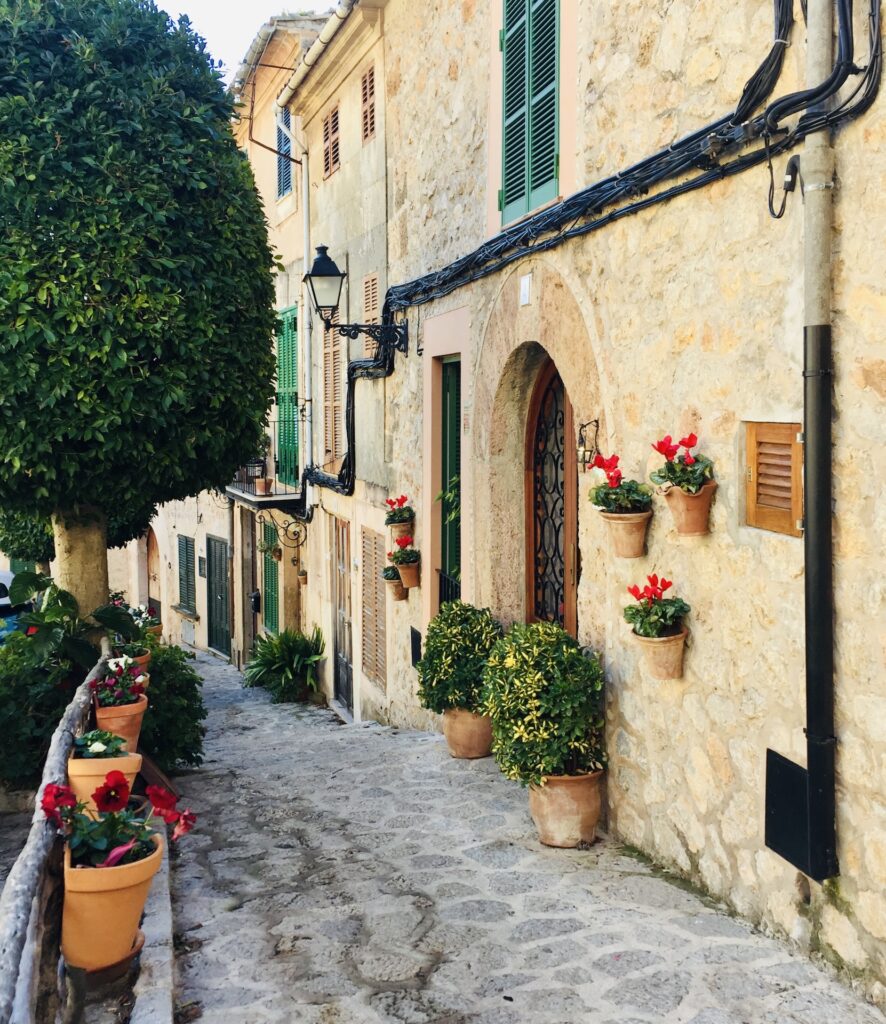
The quaint village of Valldemossa on the Balearic Island of Mallorca is one of the hidden gems in Spain off-the-beaten path. Valldemossa sits in a scenic valley in the midst of the Tramuntana mountains. It is only a 20 minute drive from the capital city of Palma de Mallorca. Flights from mainland Spain bring seekers of beauty and peace to this island paradise.
Valldemossa boasts Real Cartuja, the Carthusian Monastery where composer Frederick Chopin spent a winter. He and his lover, the writer George Sands, resided in the 13th century monastery as an ill fated retreat. However, tourists still flock to see where Chopin composed his music. A Chopin piano in the museum can be seen.
Flower boxes on the windows of the stone houses create a rustic charm. You can stroll the cobblestone streets to find cute cafes or authentic restaurants. Many houses have a statue or picture of Santa Catalina Thomas, Mallorca’s patron saint who was born in Valldemossa.
Outdoor enthusiasts will enjoy the many trails that lead from the village into the mountains or valley. The olive, almond, and orange trees create a beautiful sight through the valley.
There is a weekly outdoor market for delicious food and local fruits and vegetables. This Sunday market also has gorgeous handicrafts and textiles.
A visit to Valldemossa can be an easy day trip from Palma de Mallorca or you can stay over in a historic hotel to absorb some of the cultural heritage and charm.
La Gomera, Canary Islands
By Lara from thebesttravelgifts.com
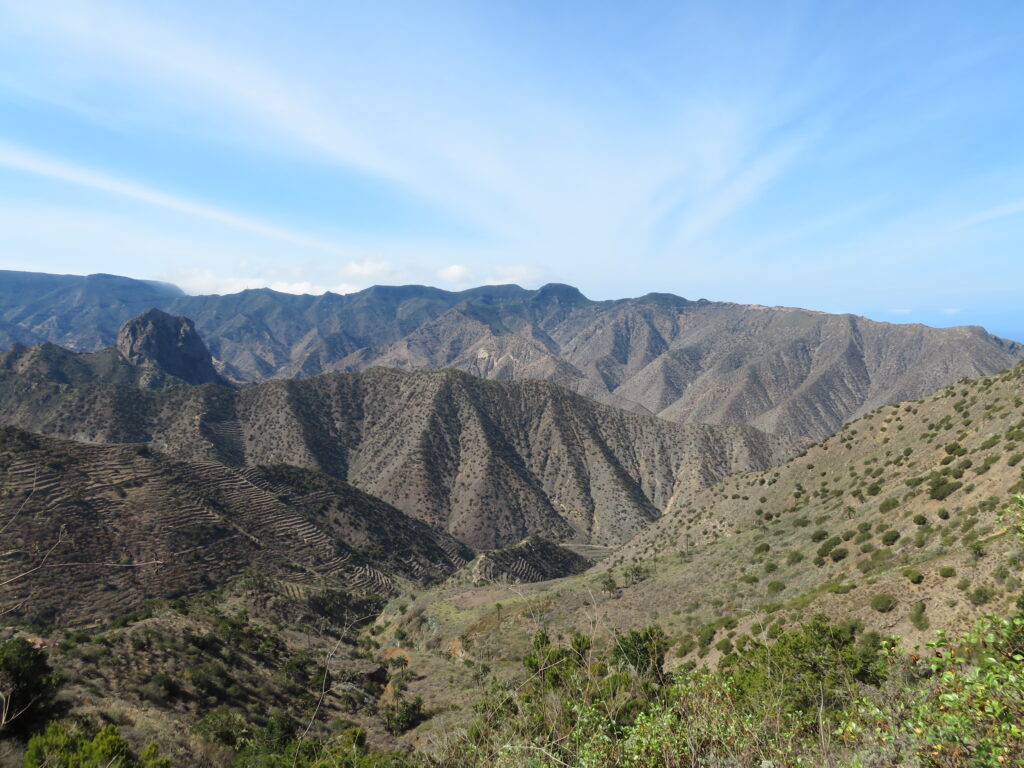
The Canary Islands are one of the most popular destinations in Spain. However, one island is often overlooked; La Gomera. It is truly one of the most beautiful hidden gems in Spain off-the-beaten path.
La Gomera is a circular island located right across Tenerife. It’s a beautiful mountainous and green island and it’s the least populated of the eight main Canary Islands. This makes La Gomera one of the best-hidden gems in Spain for people who love hiking, nature, and peace and quietness.
As you probably already guessed, the number one thing to do in La Gomera is to go hiking. It hardly even matters where. The entire island lends itself perfect for hiking. Alto de Garajonay (the islands highest peak at 1,487m or 4,879ft) is one of the most popular places to hike. Other alternatives include the world heritage listed Garajonay National Park and valley to Roque Cano.
Besides hiking, La Gomera is also perfect for people who love cute towns and relatively quiet beaches. The towns that are definitely worth a visit are Valle Gran Rey, Vallehermoso, and San Sebastián de La Gomera (the island’s main city).
The best way to see the most of the island is to rent a car. Having a car allows you to explore each part of the island and admire its beauty from the numerous miradors you will find on the island.
How much time you should spend on La Gomera greatly depends on the number of hikes you plan on doing. If you plan on hiring a car and only going for a few half-day hikes, you can easily explore the island in three days. If you are an avid hiker, you may want to stay for about two weeks. And if you don’t mind spending a lot of time on a bus, you can also book a day-trip from Tenerife.
Santiago de Compostela
By Campbell from Stingy Nomads
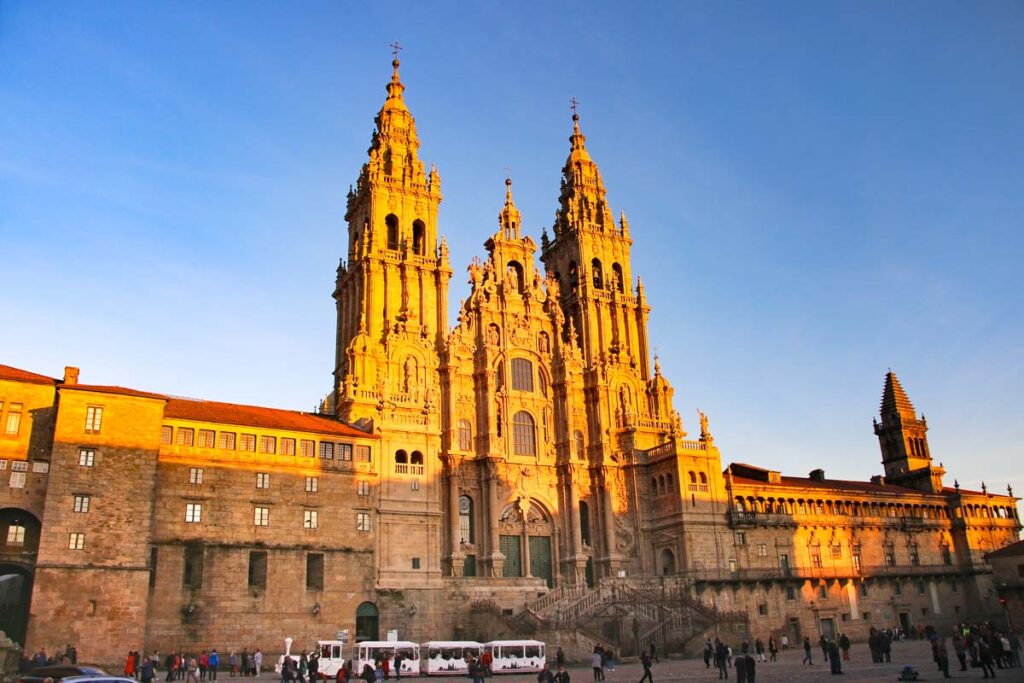
Santiago de Compostela is a beautiful city in Galicia, Northern Spain and is one of the most interesting hidden gems in Spain off-the-beaten path. The city is known for its impressive Gothic Cathedral which contains a tomb with what’s believed to be the remains of Apostle St.James (Santiago in Spanish). Since the discovery of the tomb of St.James in the 9th century Santiago de Compostela has been one of the most important pilgrimage places for Christians. Nowadays over 300 000 people every year arrive in Santiago after completing one of the Camino de Santiago routes. The Old Town of Santiago de Compostela, including the Cathedral, is a UNESCO World Heritage site.
There are many great things to do in Santiago de Compostela. Exploring the Old Town on foot, visiting the Cathedral, and enjoying the tranquillity of the Alameda Park are some of the must-do things in the city. There are many amazing day trips to the coast that can be done from Santiago. Visiting local tapas bars is another not-to-miss thing in Santiago de Compostela. Friday nights are the best time to go out for drinks and tapas in Santiago. Rua do Franco next to the Cathedral has some of the best tapas bars in the city. Galicia is famous for fresh fish and seafood. Some of the local delicacies include Pulpo a la Feira (boiled octopus served with spices and olive oil), Pimientos de Padrón (fried green peppers), and Tarta de Santiago (almond cake).
One can spend several days exploring Santiago de Compostela and its surroundings. The summer months, between June and September, are the best time to visit Santiago de Compostela. In Galicia, it doesn’t get as hot as in other Spanish regions during the summer. Outside the summer season, it rains quite a lot, especially during the winter months.
Parque Naturale Bardenas Reale
By Kat from Biker Girl Life
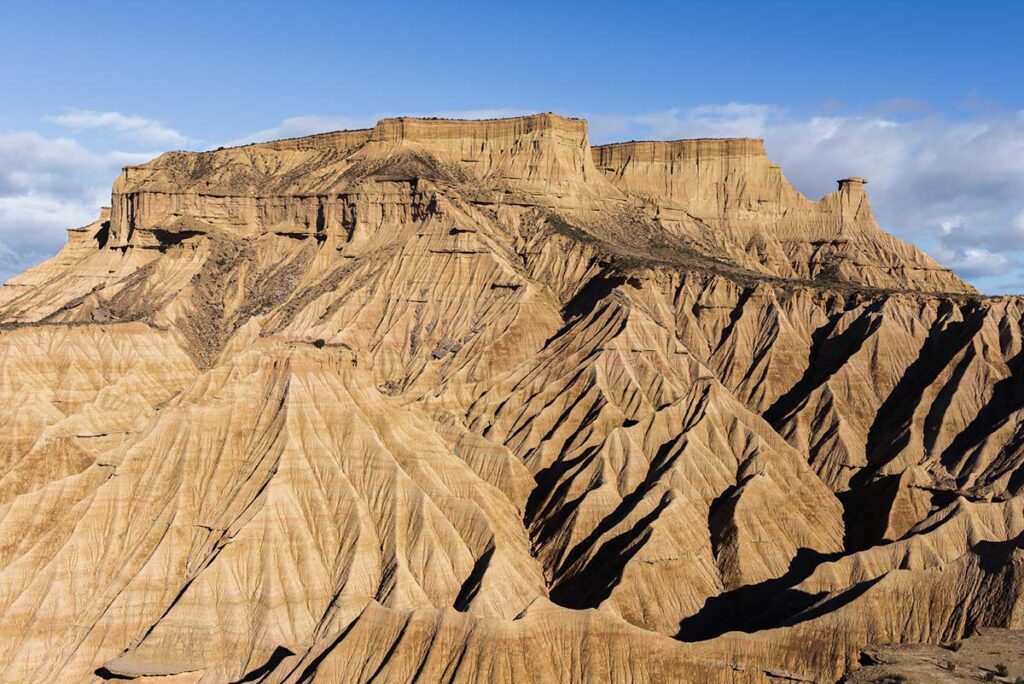
Considering it’s one of Europe’s largest deserts, Parque Naturale Bardenas Reale is surprisingly unknown. Which makes it even better when you visit it as there are far fewer visitors than you might expect.
The scenery could be straight out of a movie set; all huge rocky crags and barren looking landscape. In fact, it was used as the Dothraki Sea in Game of Thrones, because it’s so barren, yet there is still a surprising amount of wildlife.
You drive yourself around the park, and routes are open to cars, campers and even bikes if you are motorcycling in Spain. Roads are fairly easy to navigate and there’s a great loop which you can do in 3-4 hours (depending on how often you stop to take photos!)
Parts of the park are often closed by the rangers in order to protect birds nesting or for some other animal conservation efforts, and some areas are also an active military zone; it’s not uncommon to see military jets overhead, so please do pay close attention to the signs so you don’t take a wrong turn.
There are a couple of fantastic vantage points not to miss, including Castil de Tierra and several abandoned houses which are fun to look around.
Pink Lake in Torrevieja
By Baia from Red Fedora Diary
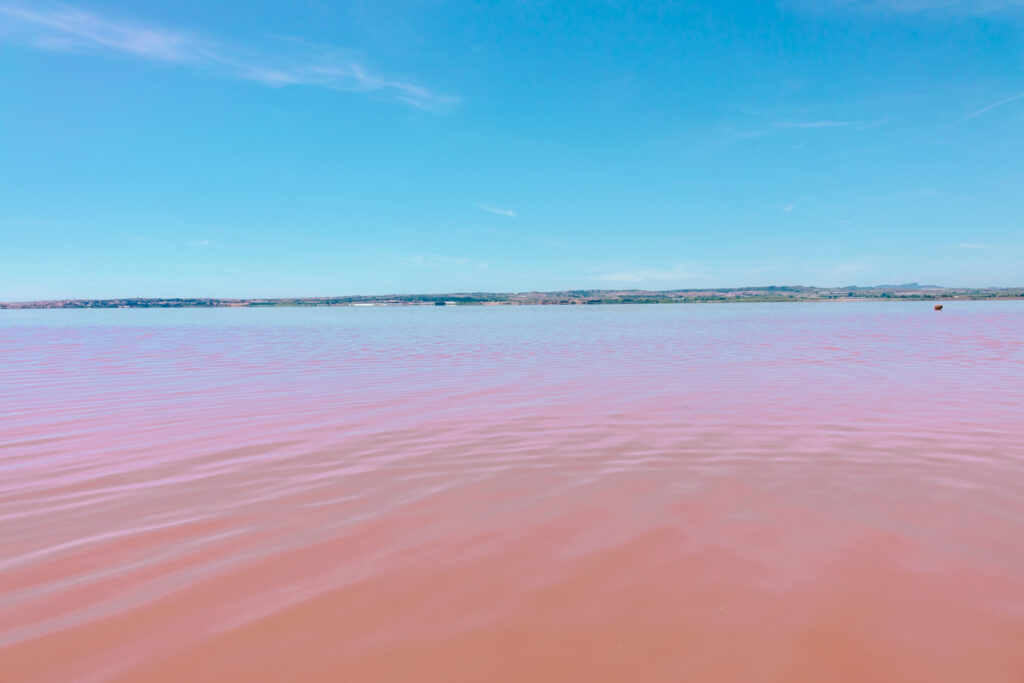
If you are looking for hidden gems in Spain, then head to the city of Torrevieja to see the bubble-gum pink-colored lake. This salt lake is also called Laguna Rosa in Spanish, which gets its color from algae and bacteria that grow in salty areas. It can easily be visited as a day-trip from Alicante.
Note that the lake doesn’t look very pink from far away, and the color is much more noticeable as you get close. And the best time to go there is late spring or early summer.
The best way to visit Pink Lake in Spain is to rent a car. There is no public transport going there. There are only buses from Alicante to Torrevieja or other neighboring Costa Blanca region cities.
The lake is pretty big and has several entrances listed on Google Maps. One of the better places to get close to the lake is from Verde de Torrevieja and Calle Munera street junction. There might be bushes blocking the entryway from other entrances.
There is no charge to visit the lake. Bathing in these salty areas is not allowed, and if caught, you might get a hefty fine. Therefore, be cautious and mindful.
Playa de las Catedrales
By Mariana from roadtripeuroguide.com
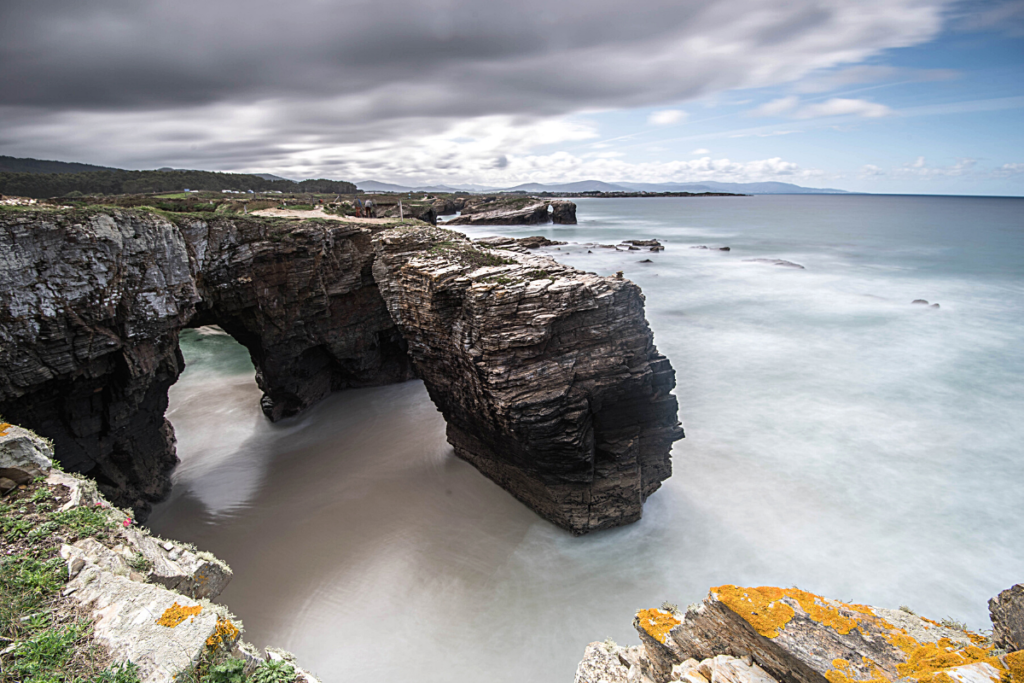
Playa de las Catedrales is one of the more naturally unique stops on any Northern Spain Road Trip, and one of my favorite beaches in Galicia. This natural wonder gets its name from the soaring arches formed by the sea removing softer stone from the rock over time. The wonderful thing is that you can walk through these arches at low tide, and it will feel like walking through a cathedral made by mother nature herself. If you’re a beach lover, this is one of the hidden gems in Spain you should definitely visit.
The best time to visit is an hour before low tide which happens twice a day, so you have plenty of time to walk the beach and take pictures. If you go during high tide, the beach is covered by water, and while you can enjoy the beach from the cliffs, it’s not where the magic is. General admission is free, but you do have to reserve a spot here if you want to go down to the sandy area during low tide. I loved going mid-morning during late summer for a perfect day on the beach.
After walking around, there is a cute snack bar by the entry point to the beach where you can enjoy the views, but just a couple of minutes down the road are authentic fisheries that serve the day’s catch – this is what you want for lunch! And for a dinner meal that day, head to the next town over, Rinlo, for the baked pulpo at Restaurante a Mirandilla. All in all, Playa de las Catedrales is one of the most famous natural monuments and beaches in Galicia, and it often gets overlooked – make sure you don’t make that mistake!
Cordoba
By Maya & Sari from Chasing Lenscapes
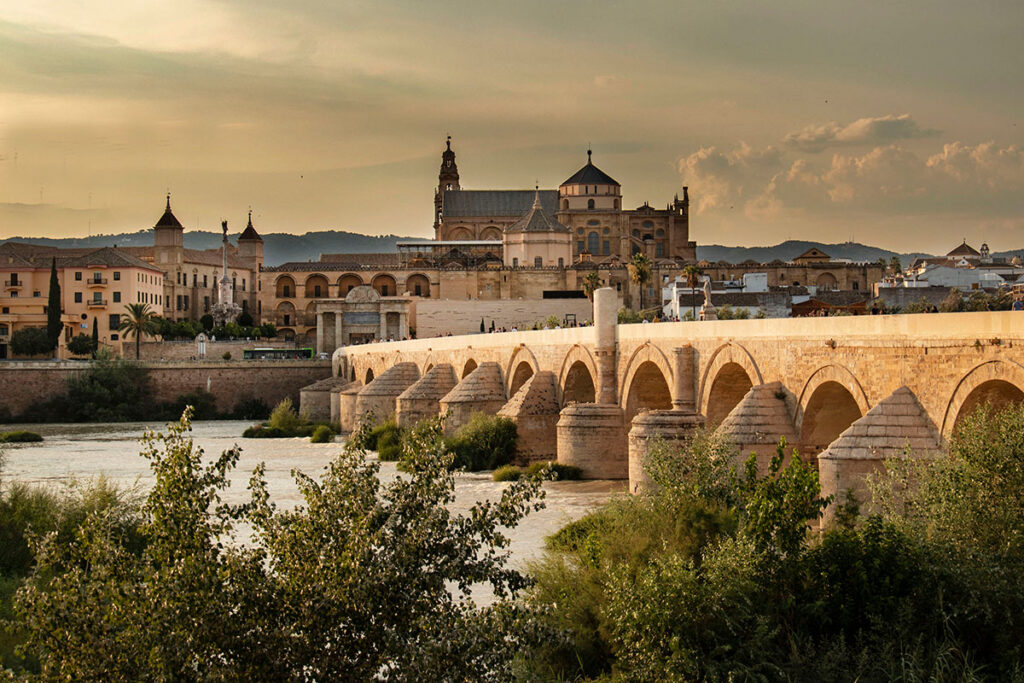
Cordoba in Spain is one of our favorite European cities. This hidden gem in Spain is the perfect getaway for a weekend in style. The old alleys of Cordoba are filled with historical landmarks, picturesque spots and delicious tapas bars. Cordoba is located in Spain’s Andalusia region, and it can be easily reached from Madrid and Sevilla by car or by train.
There are many things to do in Cordoba but the first thing on your bucket list should be to explore Cordoba’s historic center where you’ll find numerous UNESCO World Heritage Sites including the famous old mosque, Mesquita, with its unique architecture. Next, you should stroll around the beautiful, white-washed alleys of the old Jewish Quarter that are filled with leafy patios, charming stores, instagrammable spots (check out Calleja de Las Flores) and historical sites. Don’t forget to cross Córdoba’s Roman Bridge (which appeared in season 5 of Game of Thrones) and climb up Torre de la Calahorra for a magnificent view of Cordoba from above.
A visit to Cordoba is not complete without trying some of its delicious culinary scene. You must try the local Gazpacho and Ajo Blanco (almond and garlic cold soup) both are the perfect dish to cool you off in the hot Andalusian summer. There are also many tapas bars and Churro bars scattered all over town.
You can probably cover most of the attractions in Cordoba in about 2-3 days but if you’re visiting during the extremely hot summer months, you’d better do your sightseeing during the mornings and afternoons and spend the hottest hours of the day at your hotel’s pool. If you love festivals, try and visit Cordoba during April and May to participate in some of its local spring festivals.
Altea
By PlacesofJuma
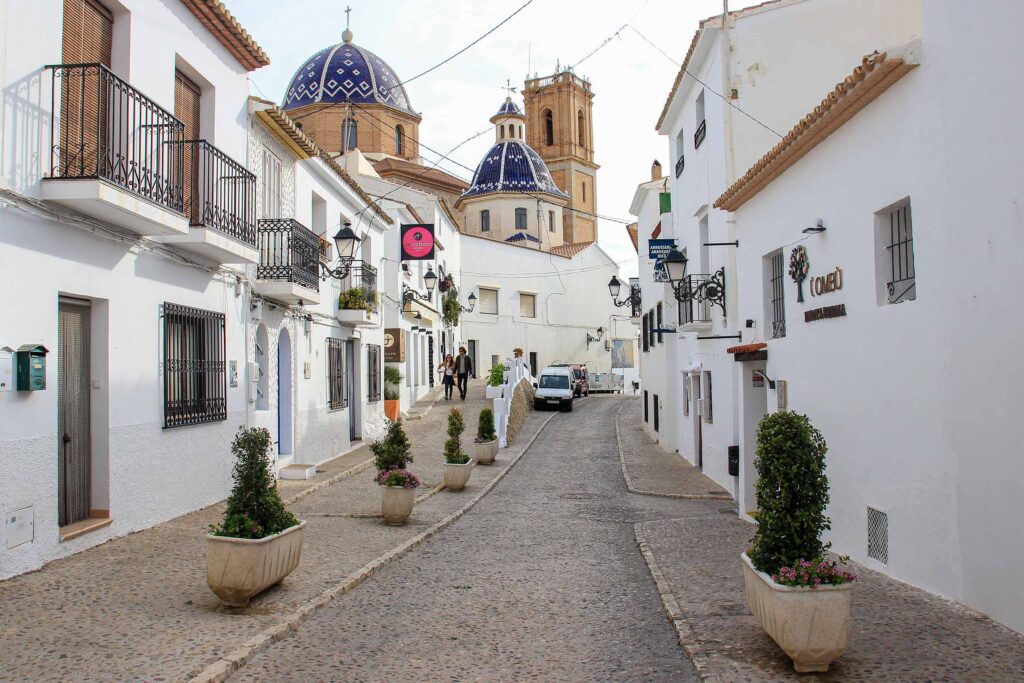
Altea is definitely one of the most beautiful hidden gems in Spain. Breathtaking is especially the beautiful old town, which is located on a hill above the sea and inspires as a snow-white coastal town. At the same time Altea is a small beautiful resort of the Costa Blanca and for insiders one of the most beautiful places for a vacation in the region of Alicante in Spain.
A sightseeing tour explores a veritable maze of winding alleys that wind up a hill, from the top of which you can enjoy a magnificent view of the deep blue sea. On the top there is a romantic main square with small taverns and restaurants where you can eat and enjoy wonderful food. The landmark is the bell tower of the church Nuestra Señora del Consuelo, which you can see from far away with its blue domes.
It’s best to just drift through the small streets, marvel at the beauty of the snow-white houses and enjoy the numerous viewpoints. Also great are the small galleries and pretty stores selling real art, beautiful jewelry and great souvenirs.
One day in Altea is enough to explore the old town. However, thanks to the great beaches and the many possibilities for excursions, it is worth staying longer. A week is just perfect if you are planning a vacation.
Masca, Tenerife
By Heather from Conversant Traveller
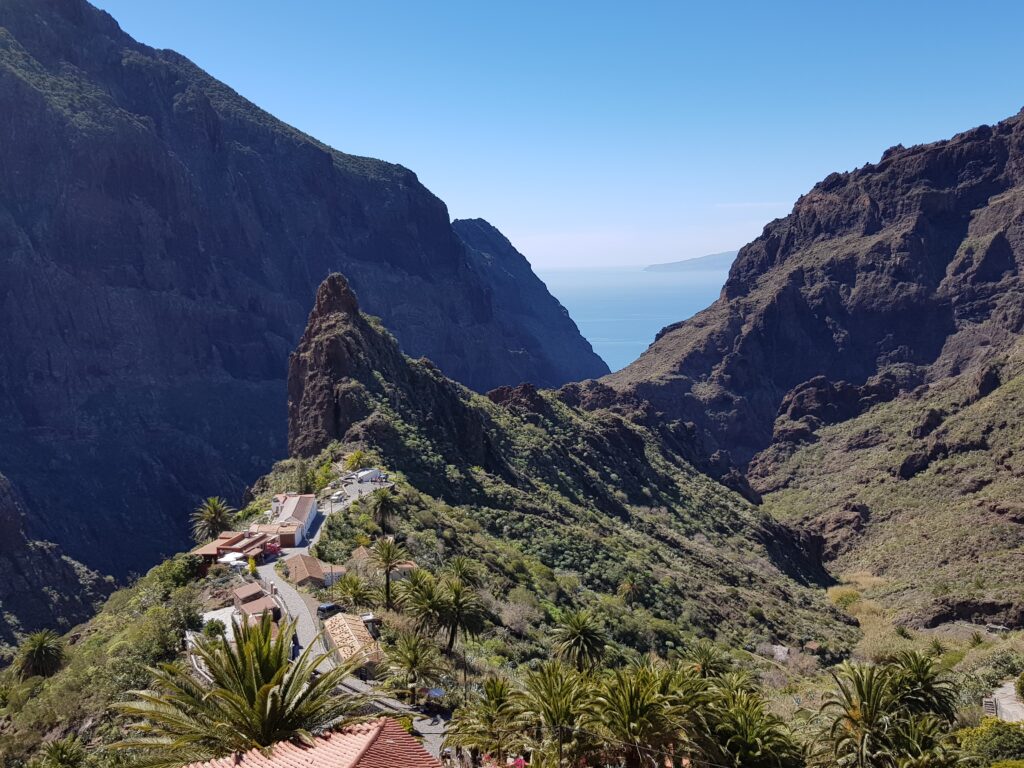
Of all the places to visit in Tenerife, Masca is perhaps one of the most magical hidden gems in Spain. This tiny mountain village perches precariously on a ridge and is home to just 90 people. Tucked away in the wild Teno Mountains, the hamlet is one of the most picturesque hamlets on the island. Palm trees are dotted across the green slopes, where whitewashed houses reflect the bright sun.
The best way to get to Masca is by car, with a short drive up into the hills from the coastal resort town of Los Gigantes. The journey itself is an adventure, with steep switchbacks and glorious views both vying for your attention. The road is wide enough for a standard rental car to negotiate, so despite the elevation, it feels quite safe. There’s a car park at the top, and you can use a couple of trails to walk down to the village, which takes about 10 minutes.
As it’s such a small place, an hour or two is long enough to soak up the vibe. The main thing to do here is soak up those views, with high peaks, deep ravines, and tropical vegetation on all sides. Pop into the tiny 18th century church on your way down – it’s so small that only eight people can fit inside! There are a handful of restaurants and bars if you fancy having a panoramic lunch, or if you’re feeling particularly energetic, you can hike down the Masca Canyon to the ocean.Do let me know when it’s published and I’ll be happy to share.
Tapia de Casariego
By Milijana from World Travel Connector
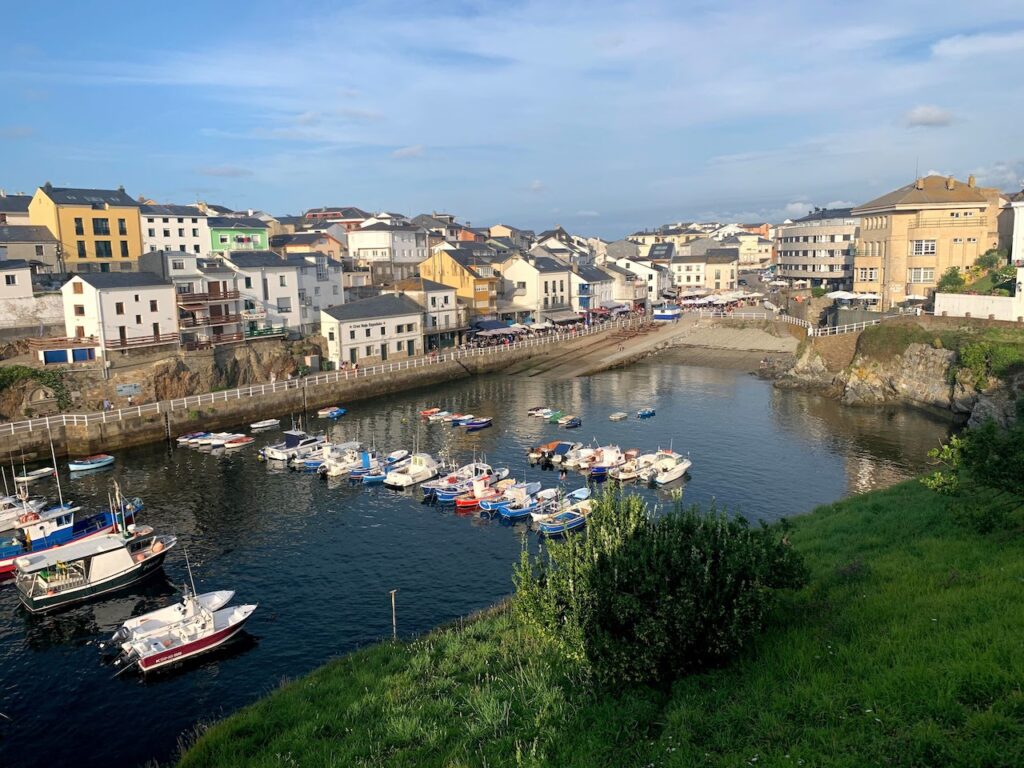
Beautiful Tapia de Casariego in Asturias is one of the most picturesque towns in northern Spain.
Tapia de Casariego, or Tapia for short, is one of the best hidden gems in Spain for enjoying the sea, beaches, nature, and outdoor sports. The town is a popular stop on the El Camino del Norte route in Asturias (on the famous St James Way to Santiago de Compostela in Spain).
Tapia is an idyllic fishing port and a surfing mecca in Spain. It is settled in a small bay with green rocky cliffs and the Isla de Tapia lighthouse on the Cantabrian Sea in Asturias. Tapia is known for the breathtaking seafront promenade, lovely beaches, recreational areas, stunning sea cliffs, majestic coves, and a unique saltwater pool perfect for refreshing baths.
The heart of the town is the picturesque area around the port. The port is full of lovely cafes, romantic terraces, cozy taverns, and fantastic restaurants with a leisure seaside vibe and the sound of seagulls in the background. If you want to try some of the best seafood food in Spain, you need to check out restaurants in Tapia. The sandy Anguliero beach in Tapia is a prominent surfing spot of the World Surfing Championship. There are many great hiking trails in the area as well.
Today Tapia is one of the favorite summers resort towns of Spaniards. It is a lovely weekend gateway for outdoor lovers but also a great place to spend a summer vacation in Spain for nature lovers. Tapia is easily reachable from Gijon and Oviedo in Asturias and Ribadeo in Galicia. It is about 75 mi (122 km) away from Gijon, 81 mi (127 km) away from Oviedo, and 6 mi (11 km) away from Ribadeo.
Oviedo
By Cosette from KarsTravels.

A hidden gem in Northern Spain in the region of Asturias is Oviedo. Since the city is not yet that famous, there aren’t throngs of tourists, which gives a laid back vibe to discovering the city.
The number one reason to visit Oviedo is the Calle Gascona, a street lined with sidrerías (cider houses). They all serve the famous apple cider that is produced in the region. They make a show of the pouring of the cider at most places. It’s served from up high in the glass, it has more oxygen that way and that provides more flavor.
Oviedo is the start of the Northern pilgrims route to Santiago de Compostela, the Camino de Santiago. The start is at the beautiful gothic cathedral in the city center.
The historical city center is small, with lively squares, churches and colorful buildings. Visit the Catedral de San Salvador, Plaza del Fontan (more sidrerías here) and the Campo de San Francisco (a beautiful large park in the middle of the city). Admire the many statues throughout the city.
We visited Oviedo twice, first on a Northern Spain road trip, we loved it so much we returned again on our France Spain Portugal road trip. I recommend at least one whole day in Oviedo, but two to three days would be perfect.
Lobos Island
By Paulina from ukeveryday.com
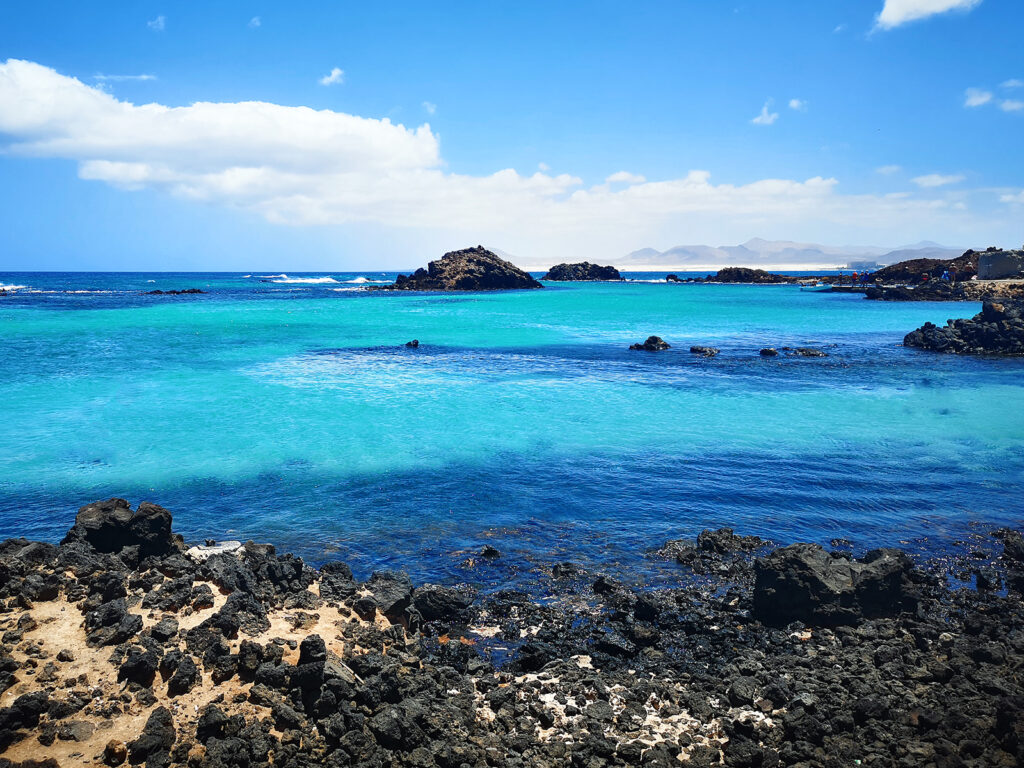
During your holiday in Fuerteventura, make sure to book a trip to Lobos Island that takes only 15 minutes to get there by water taxi. This tiny paradise with incredible turquoise water is a great place to explore if you don’t like the crowds. Only 400 people are allowed to enter Isla Lobos during the day. This is definitely one of the most exclusive hidden gems in Spain off-the-beaten path.
The first group of 200 visitors reaches the island in the morning to explore this beautiful hidden gem in Spain. The next slot is in the afternoon, however, most people that arrive in the morning come back to Fuerteventura with another group.
Each slot has a 2 hours window which allows you to enjoy incredible views of this unspoiled island. Getting a permit to visit Isla Lobos is not difficult and you can find all information on the official council website or ask for advice on tourist information.
If you want to do some hiking on Lobos, make sure to bring with you good shoes. This volcanic island is a perfect place to relax at the beach, and also walk around. Isla Lobos is a hidden paradise where you can take some jaw-dropping pictures and make unforgettable memories. One of the best spots for photos is Puertito Isla De Lobos with incredible views of volcanic rocks, boats, and turquoise clear water.
Caminito del Rey
By Emily from emilyembarks.com
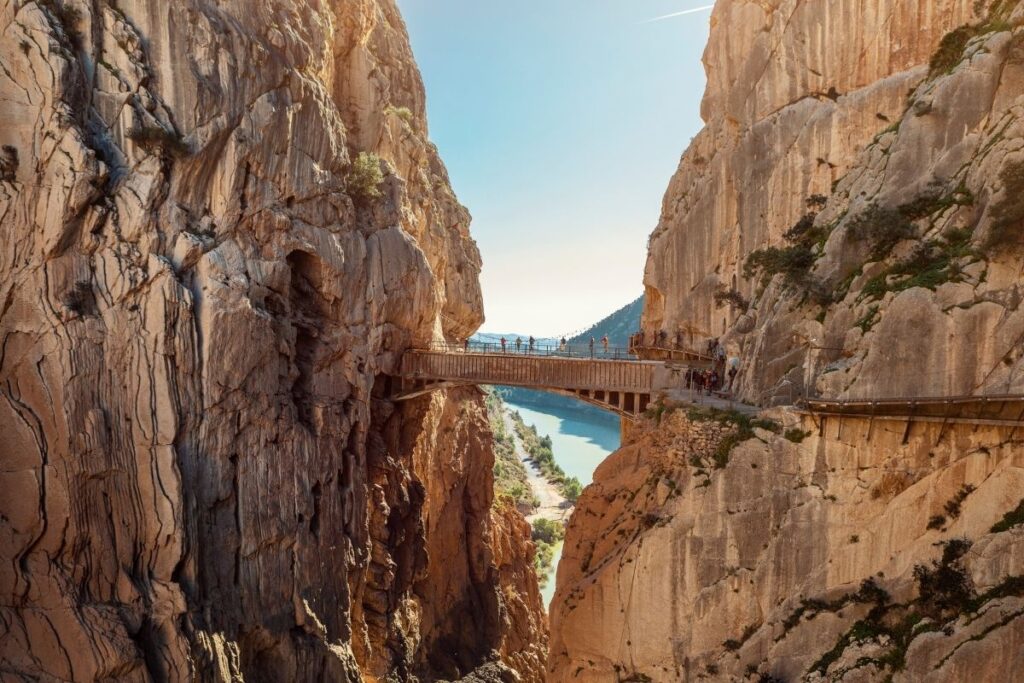
Pressed against the vertical cliffs of the Gaitanes’ Gorge found within the Málaga province of Spain, the Caminito del Rey is an adrenaline-pumping aerial bridge that offers unparalleled views of the valleys and steep drop below. Owing to its unique location within the crevice of this major gorge, the Caminito del Rey can only be reached via guided tour and the use of personal protective equipment such as helmets and harnesses is required.
While many travelers arrive confident in their abilities to complete the 3-kilometer trail, crossing this bridge isn’t for travelers with a fear of heights. Spots along the aerial trail reach heights of over 300 meters tall and only 1 meter in width or less! If you are up for the challenge, it’s recommended to set aside a half or full day for the activity. 3 kilometers may only take you around 45 minutes or so on the ground, but when you’re in the air, you’re likely to be moving much slower on average.
So, for travelers looking for a blood-pumping day trip from El Chorro, the Caminito del Rey bridge is the best in the region! You can spend your day looking out at the spectacular views overlooking the Guadalhorce River and even get some pictures of yourself over 980 feet (300 meters) in the air! The Caminito del Rey bridge is easily one of the best hidden gems in Spain that every adventure traveler should surely include on their next visit.
Nerja
By Cristina from My Little World of Travelling
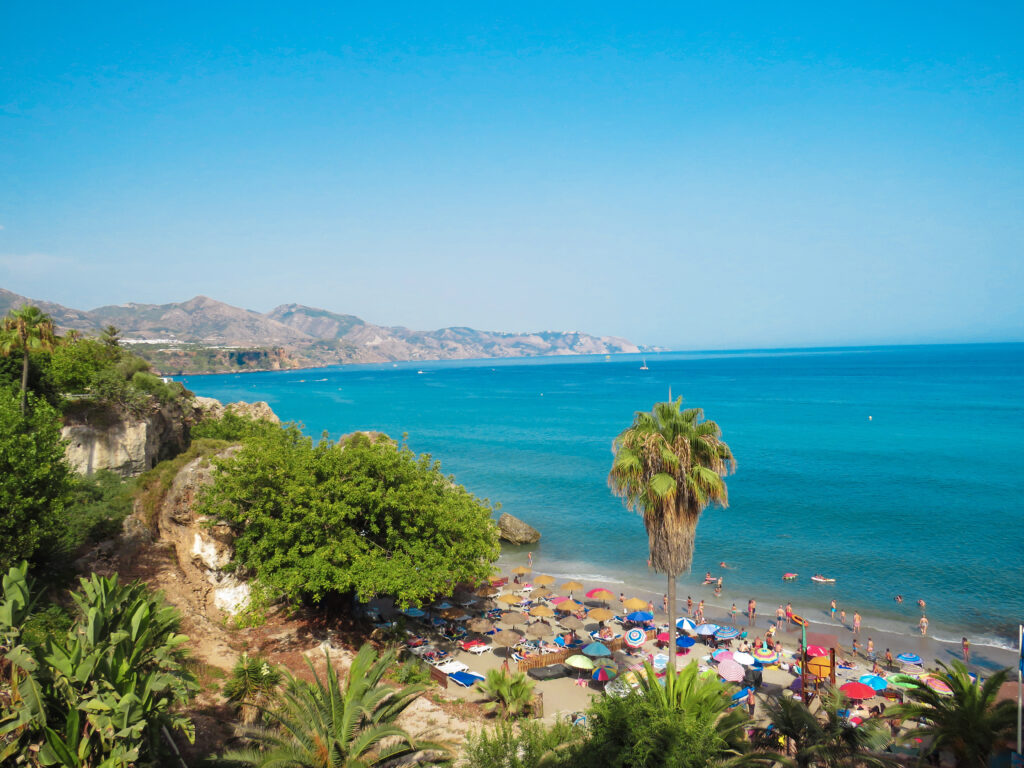
Nerja, located in Southern Spain, is one of the most beautiful towns on the Costa del Sol, and there is no doubt why – narrow and pebbled streets, whitewashed buildings and pristine beaches.
Despite being a small town, there are many great things to do in Nerja and its surroundings. Visiting Nerja Caves is a must as here you can see incredible rock formations and the largest stalactite in the world.
After visiting the caves, head to Nerja Old Town to wander its beautiful narrow streets home to many independent shops where you can buy traditional souvenirs like leather bags, jewellery and crafts.
Whilst you are in the old town, visit El Salvador church and stop by one of the many restaurants and bars to enjoy a meal. If you want to try something typical from Nerja, order sardine skewers or Malaga fried fish, but if you love paella, you must go to Ayo restaurant, which isn’t in the old town but it isn’t very far either.
Finally, go to Balcon de Europa, one of the most magical viewpoints in Andalusia. Contemplate the combination of crystal blue water, rocks and mountains.
Apart from these sightseeing activities, Nerja is also perfect for spending the day at the beach. There are plenty of beautiful beaches on which you can relax or do a watersport activity like snorkelling or kayaking.
However, it’s important to know that beaches in Nerja get very busy during the summer months. Go to Cala del Pino for a more tranquil beach.
Last but not least, if you are visiting Nerja is also worth checking out Frigiliana, another incredible whitewashed town at only 20 minutes by car.
Fuente de Piedra
By Joanna from andaluciainmypocket.com
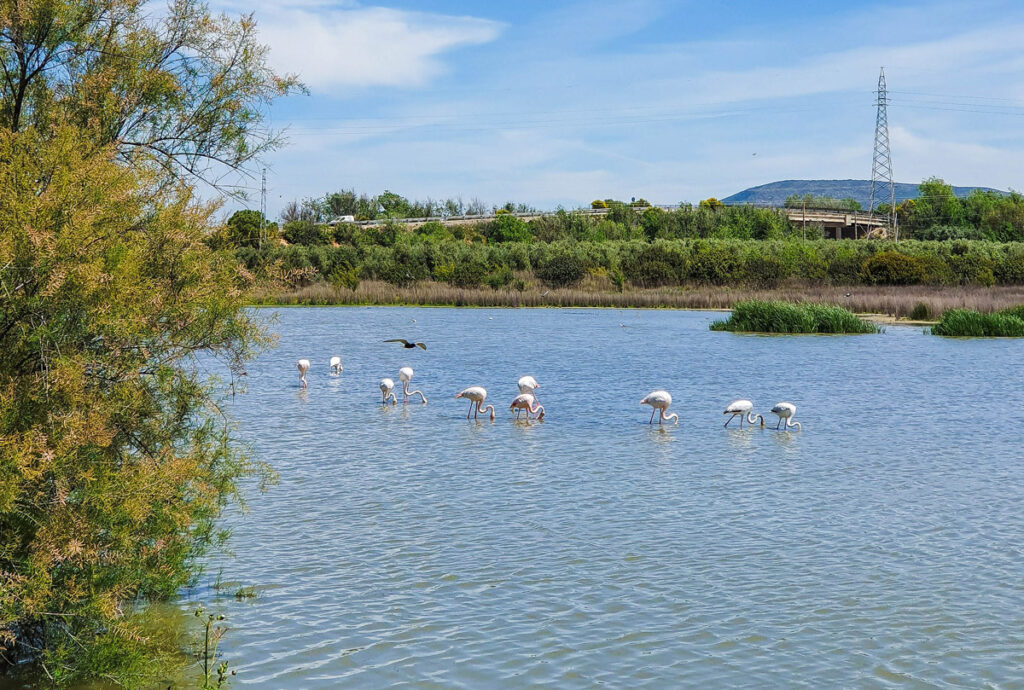
Fuente de Piedra is a unique place in the south of Spain, in Andalucia. The small village is home to one of the largest colonies of pink flamingos in Europe. Each spring, tens of thousands of pink flamingos come here to nest, on the largest natural lake in the Iberian Peninsula.
The best time to see the flamingos in Fuente de Piedra is between February and May. The birds start to arrive in May, and by the end of April, the little flamingo chicks are big enough to start learning how to fly. The most successful years see over 15,000 flamingo chicks being born at Fuente de Piedra.
Visiting Fuente de Piedra is quite easy, both by private car and by bus. The village is well connected to Malaga. The bus will leave you 2 kilometres away from the lagoon’s visitor centre. Parking at the visitors centre is free. Also, the visitor centre is running a daily observation tour, providing visitors with a guide, binoculars, and telescopes.
The lagoon in Fuente de Piedra is not famous just for the flamingos, but also for bird watching in general. There are over 170 different species of birds that either live here or come here each year to breed. You can’t approach the shores of the lake, but there are plenty of observation points around it, connected by a walking trail.
Anaga Rural Park
By Alejandra from Tenerife-Is

While hundreds of thousands of tourists fly to Tenerife every year, only dozens make it to the island’s hidden gem, Anaga Rural Park. The reason for this is that this unique place is located in the very north of the island, while most tourists come to the south, where the best weather and the best beaches are.
But Anaga Rural Park is not about the beaches. It is about mountains, forests, hiking, rock climbing, unique landscapes, and seeing pristine nature. Although, there are beaches in Anaga too – wild, with unspoiled beauty and black volcanic sand.
The park’s vegetation is diverse and unique. Some species of relict plants have grown here since Paleolithic times. On the planet, such forests remained only in the Canary Islands, the Azores, and Madeira.
High up in the mountains, you can walk in the relict laurel forests, a true relic that has survived in Tenerife for 40 million years until today.
The Anaga mountain range is one of the oldest geological areas of Tenerife. Despite its small size, it is very biodiverse thanks to its climate, soil, and high altitude difference. It is an ideal place for hikers.
There are several small villages within the park. Looping among the Anaga Ranges, a road leads to a small fishing village at the foot of the mountains, Taganana. Lost amidst picturesque cliffs and prehistoric forests, the village lives its measured life, just as it did centuries ago. It is a great place to stop, have lunch and relax. In the few restaurants in Taganana, you can enjoy Canarian cuisine or fried fish.
Anaga mountain range is definitely one of the most beautiful hidden gems in Spain off-the-beaten path.
Alcazaba
By Jade from themigrantyogi.com

One of the most breathtaking hidden gems in Spain is undoubtedly Malaga’s Alcazaba. The Alcazaba is one of the best things to do in Malaga, and a stunning example of a well-preserved Moorish fortress. This iconic landmark was established in the 8th century, yet underwent several hundred years of renovations and expansions afterwards.
The fortress was one of the last seizures made by Isabel and Ferdinand during the Reconquista. The remains of the palace and the beautifully-manicured gardens take you back in time. There are two sets of citadel walls to wander along, ornab gateways built from the remains of ancient Roman columns, gorgeous grounds to get lost in, and sweeping views of the harbor district.
The Alcazaba is situated atop a hill, in true form to a traditional fortress, so try to make the ascent early as the afternoon Malaguena heat will surely take its toll.
You can explore the Alcazaba as part of a guided tour or independently. A guided tour lends more insight into the rise and fall of the fortress and its role in Malaga since the Reconquista.
Tickets are €3,50 or you can get a ticket for €5,50 that also allows you to explore the neighboring Castillo Gibralfaro. Don’t forget to check out the ruins of the Roman amphitheater below!
Mijas Pueblo
By Dan from urbanabroad.com
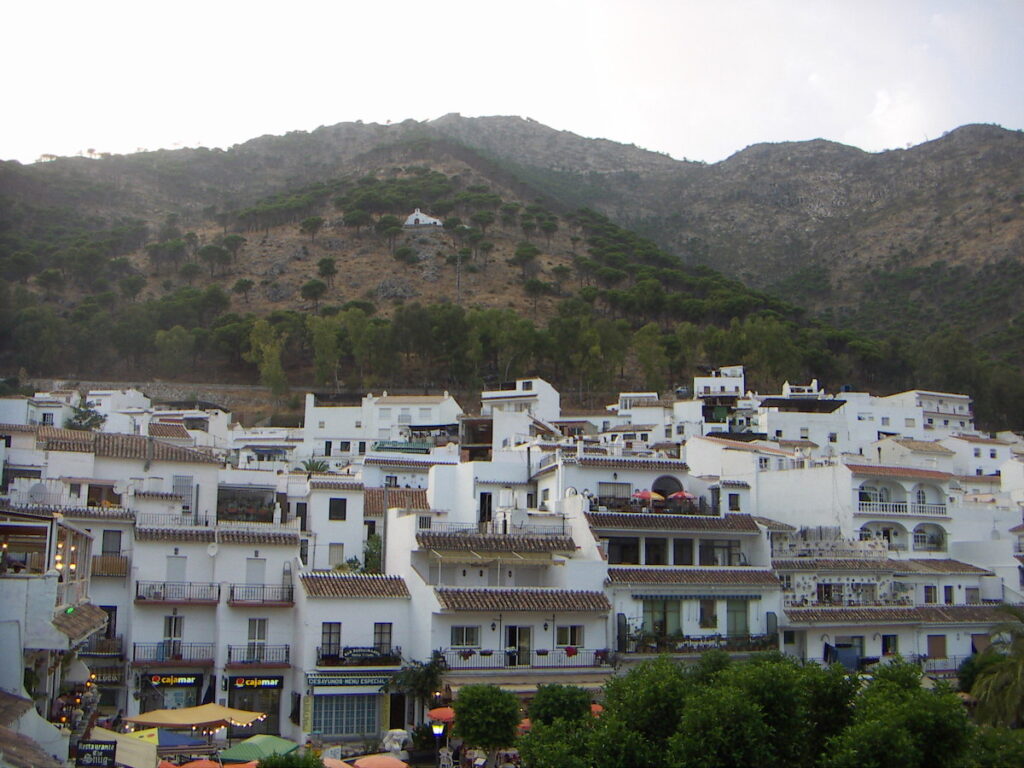
When on the lookout for some off the beaten track places to visit in Spain you may just enjoy heading down to Andalusia to encounter the perfectly hidden hilltop town of Mijas. Located between Benalmadena and Fuengirola you will need to hire a car (or get a taxi) to arrive at this whitewashed pueblo which you can also get to in the short space of 20 minutes directly from Malaga airport.
The great thing about this village is that it offers travelers who are visiting Andalusia a unique village experience that along with the cobblestone paths, whitewash walls, and narrow streets, has some very welcoming residents. It is worth visiting for half a day and my favorite time of day to visit is during the late afternoon when the village seems to be more alive. Since the village is a historical landmark you’ll find various monuments and historic buildings which means it gets quite busy.
Mijas Pueblo is also a great place to try some authentic Spanish food in the form of traditional Tapas dishes. The Snug restaurant is a must-try and offers magnificent views from the balcony where you can overlook the village square during your lunch or evening meal. Aside from the panoramic views of the Costa del Sol, you’ll find plenty of gift shops filled with souvenirs for you to carry home. All in all, this hidden village is the snuggly positioned in the mountains and makes the perfect place to experience the Andalusian way of life.
E’spalmador Island
By Nadine from lelongweekend.com
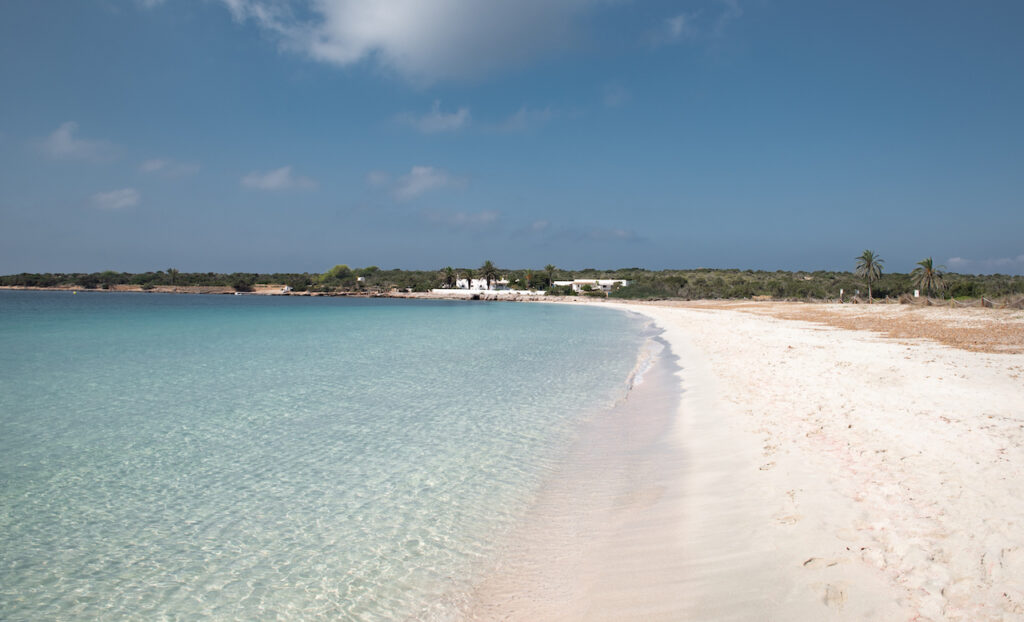
Many people who visit Spain have never heard of the smallest Balearic Island, Formentera, let alone the tiny island that sits just off its shores. S’Espalmador is just 150m away from Formentera’s most northern point, separated by a shallow channel that’s almost swimmable (though it’s discouraged to try). Instead, take a ferry boat from the port in La Savina, or from the rustic dock at Illetes beach. It is truly one of the most tranquil hidden gems in Spain off-the-beaten path.
There is no accommodation on the island, in fact, it’s privately owned, and therefore it’s only suitable as a day trip destination. But what a wondrous place to spend a day! Submerged in your own little paradise, it’s truly breathtaking and wild. Featuring some of the most beautiful beaches in the Mediterranean, a small lagoon, and a few historical relics, there’s little to do on the island except swim, sunbathe, and marvel that such untouched beauty still exists.
Because there are no facilities on the island, you’ll need to take everything you need for the day with you – including sun protection, food and water. And be sure to bring everything back with you too, as there are no rubbish bins either. On that note, be sure to keep an eye on the time if catching the last ferry back to Formentera, or you could find yourself in a sticky situation!
Castel Capdepera, Mallorca
By Joanna from theworldinmypocket.com
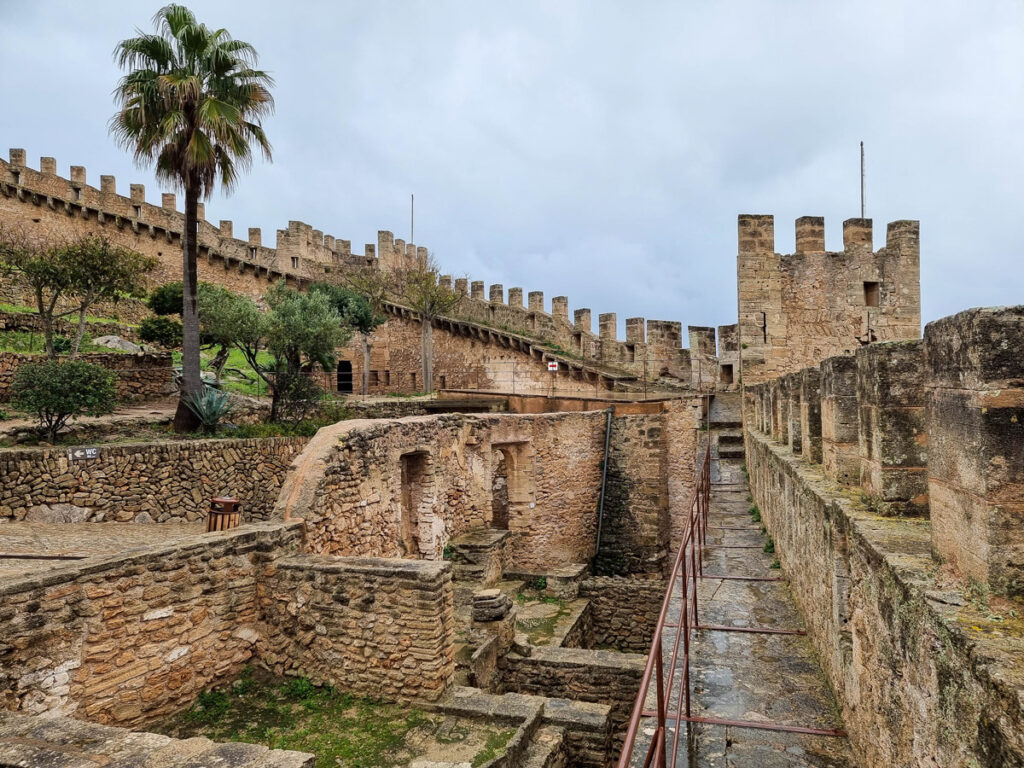
When you think about Mallorca, you will mostly imagine gorgeous beaches, all inclusive resorts and great food, and not necessarily mighty castles. However, there are some unique places to visit in Mallorca, Castel Capdepera being one of them. It is truly one of the unique hidden gems in Spain off-the-beaten path.
The Capdepera Castle is located in a town with the same name, in the Northeast of the island. It is very close to Cala Mesquida. To get to the castle you have to climb a steep hill, but it is all worth it when you get to the top. As the castle is not really on the touristic map of the island, you might even be the only visitors.
The entrance fee to the castle costs 3 euros. You can easily spend one hour discovering the most beautiful views over the walls of the castle and visiting the local exhibitions. Once a week, the castle organises a demonstration and workshop of palm weaving, which used to be a very important craft on the island.
At the highest point of the castle there is a small church which is open to the public as well. You can actually climb on the roof of the church, for a fantastic 360 degrees panorama of the north of the island.
La Garrotxa National Park
By Kat from Wandering Bird
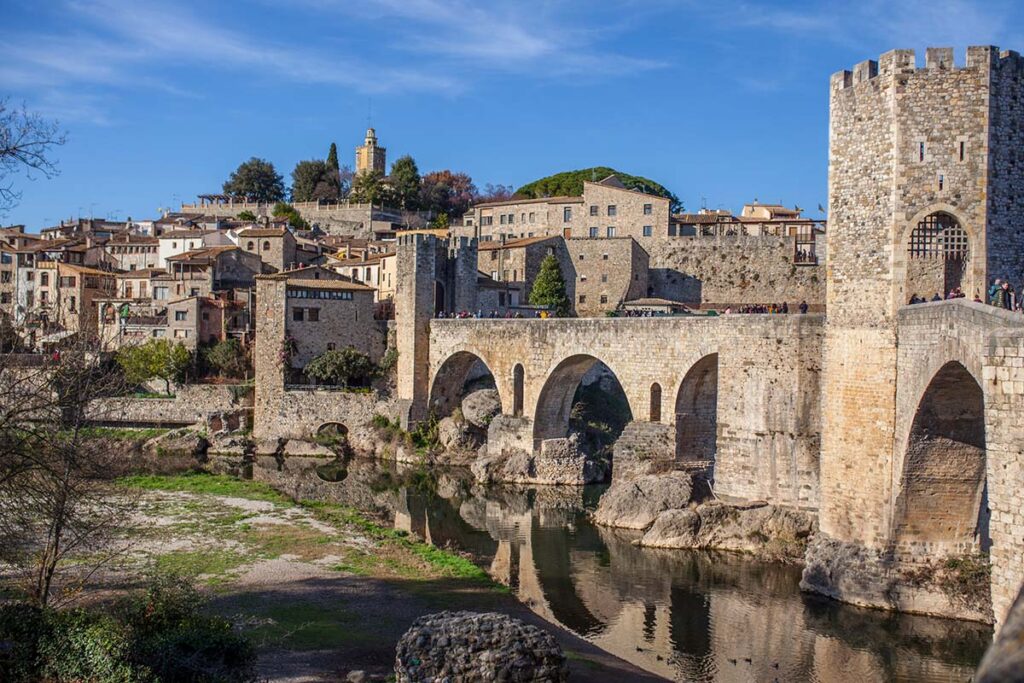
If you want a hidden gem in Spain which will make your jaw drop, head to La Garrotxa National Park in Catalunya.
This incredible area spans over 15,000 hectares and has 38 volcanic cones and over 20 lava flows, plus a huge variety of flora and fauna to capture your attention.
About 65% of the park is covered in forest, and there are over 1000 different species of plants, along with a huge variety of native animals.
The area has a fault running through it, which is why it is subject to so much volcanic activity. Each year has around 100 seismic movements, most of them undetectable to humans.
The biggest reason to visit is to get outside and hike. There are hundreds of different trails all over the park. Be sure to stick to the trails as most of the area is private property and there are strict rules about trespassing. There are several car parking areas, most of which can accommodate larger vehicles if you’re motorhoming in Spain.
Don’t miss the incredible medieval town of Besalu or the lava flows at Sant Joan les Fonts, or any of the incredible churches and castles in the area.
You could visit for a few hours, or spend a week exploring all the picturesque towns and villages, most of which are authentically Spanish and have a wonderful feel to them.
Girona
By Vicki from vickiviaja.com
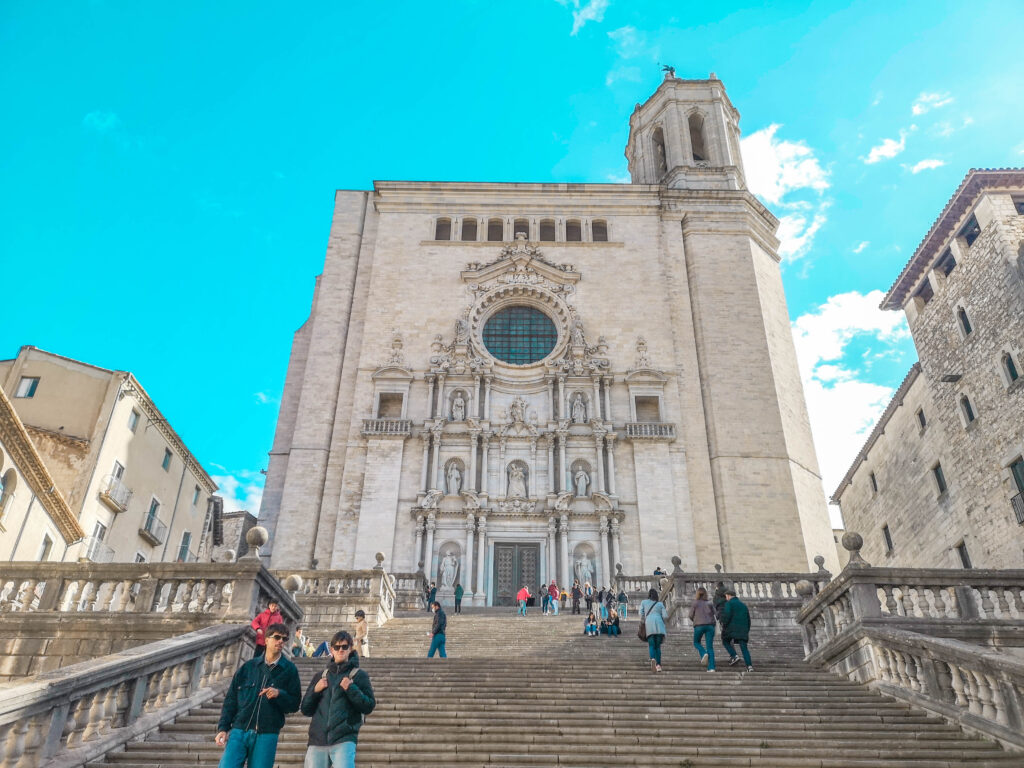
Girona, also known in other parts of Spain as Gerona, is one of the most underrated places in Spain. With its medieval streets and monuments dating back to Roman times, the city in northern Catalonia is definitely worth a visit. It is one of the quaint hidden gems in Spain off-the-beaten path.
Thanks to its proximity to Costa Brava, you can perfectly combine a beach vacation with a city break on a trip to Girona. If you have less time, it’s also worth spending just one day in Girona to explore the main sights of the Catalan city.
Probably the most visited sight in Girona is the old city wall. The well-preserved wall dates back to ancient times and provides a fantastic view of the city. You can either visit a part of the wall or walk on it along the city.
Besides the wall, the cathedral of Girona is also an absolute must-see. Especially fans of the series Game of Thrones will recognize the old cathedral from essential scenes of the series. But even if you are not a fan of the series, you will be amazed by the architecture of the impressive cathedral.
After exploring the old town and the wall, you can visit the most popular photo spot of the city, the Cases d’Onyar. These are colorful houses located along the riverbank and form a simply wonderful backdrop. You can see them from one of the surrounding bridges.
Tabernas Desert
By Faith from XYUandBEYOND
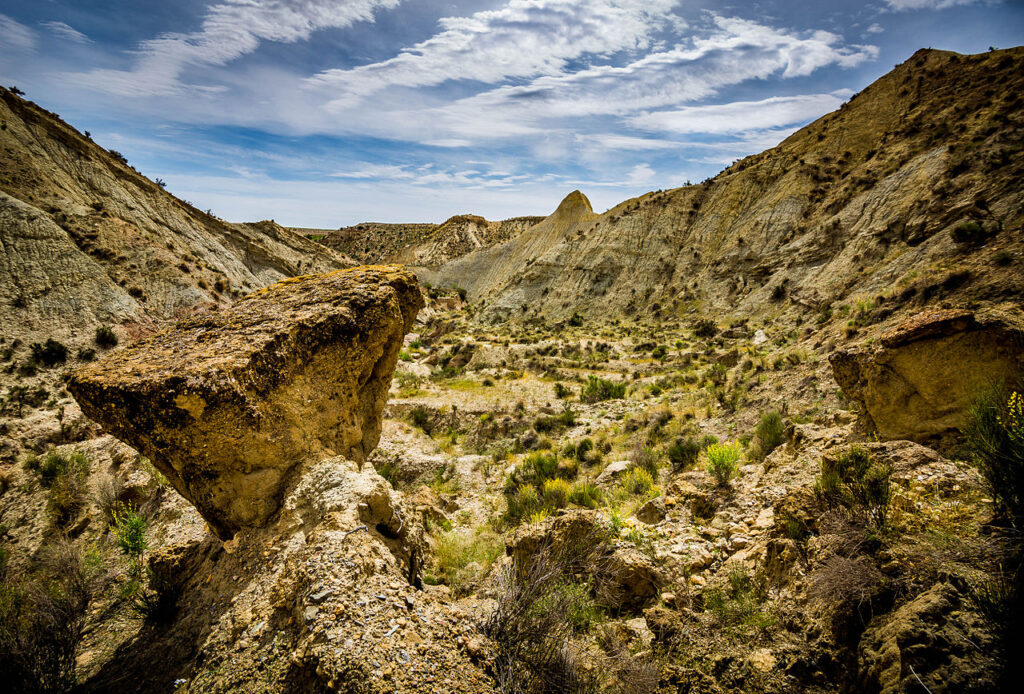
The Tabernas Desert is 19 miles north of the capital Almeria in Andalusia and it is an incredible nature reserve of over 110 square miles. It is one of the interesting hidden gems in Spain off-the-beaten track and definitely deserves a visit. Tabernas is the only inland desert in Europe and the sun shines here for over 3000 hours a year.
The Desert is an Area of Special Protection for birds and the ravines and canyons are a fragile ecological environment where rare birds and desert animals exist.
If you are travelling in Southern Spain this is one of the hidden gems you must visit. Tabernas not only contains many a walking and hiking trail but it is the home of the famous (or infamous) Spaghetti Western.
In 1989 the Andalusian government declared Tabernas should be protected for the use of the film industry. In the dessert you will find several movie sets that were saved and are now used as tourist attractions.
You can visit the places where Sergio Leone’s famous, spaghetti westerns starring Clint Eastwood’s: A Fistful of Dollars and For a Few Dollars More and The Good, the Bad and the Ugly were filmed. More recently Indiana Jones, Exodus, Lawrence of Arabia, Once Upon a Time in the West and even Game of Thrones filmed here.
Tabernas is also famous for its Almeria Racing Circuit where you can test the limits of your car. There’s a solar farm which is the largest in Europe and it even has a visitors’ centre that will take you on a tour.
You can visit an olive mill the Almazara Castillo de Tabernas free of charge and purchase some superb Spanish Olive oil. The mill covers an area of approximately 470 acres and has more than 90,000 olive trees. It was also the place of filming for Ridley Scott’s Exodus.
The Tabernas Desert is full of surprises and makes a wonderful day trip when travelling in Southern Spain.
La Molina
By Jenny from TraveLynn Family
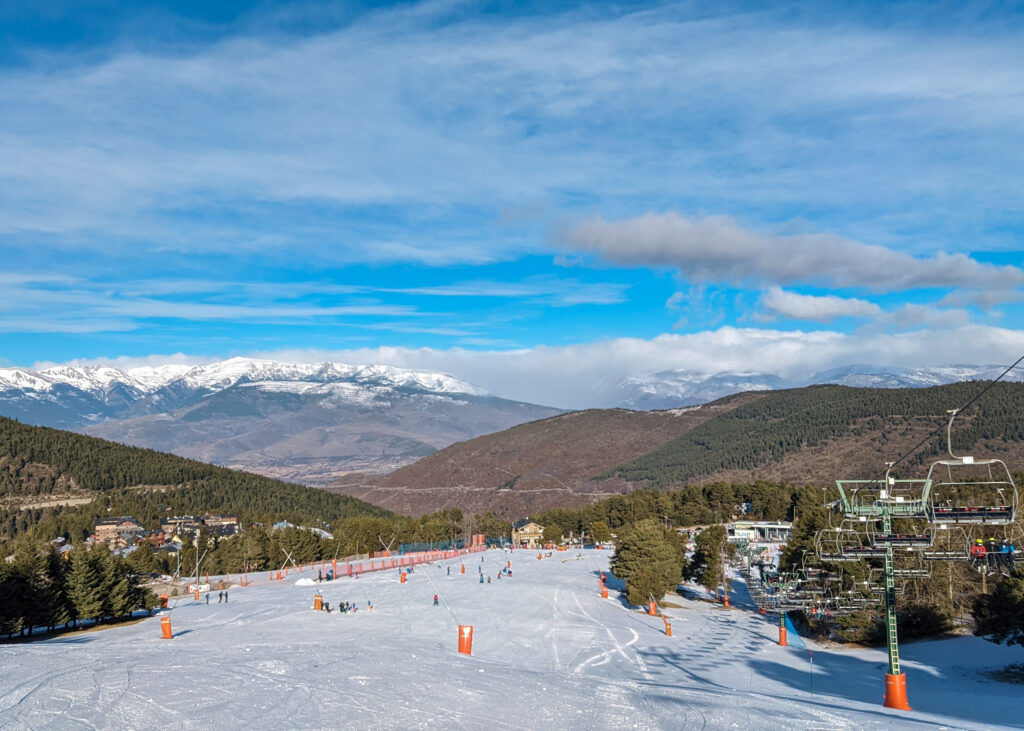
Spain is often dismissed as a skiing destination by tourists who favour the Alpine ski resorts. Indeed, travel agencies outside Spain don’t include it on their books (although some include neighbouring Andorra in the Pyrenees).
However, the low-key Spanish ski resort of La Molina, just two hours north of Barcelona (there’s even a direct train from the city to La Molina) is a the perfect resort for a first time ski trip with its array of gentle green and blue runs. It is one of the perfect hidden gems in Spain for those ski lovers. Weekends can be busy with Catalans visiting, but if you’re visiting during the week, you will have the wide and beautifully groomed slopes to yourself.
There are snow machines to keep the runs topped up and various schools to book lessons with. There are a handful of red and black runs; though if you consider yourself a pro skier, there may not be enough here to challenge you, La Molina is really geared to beginner skiers.
As for après ski, keep your expectations low. La Molina is a small ski resort more aimed at weekenders and day-trippers, so there are only a few bars and restaurants at the foot of the mountain, a small supermarket, a tiny bowling alley, and that’s pretty much it. There are more restaurant choices further down in the main village of La Molina. But this is what makes La Molina a perfect hidden gem in Spain.
FAQS
Traveling between hidden gems in Spain via public transport?
Spain's high-speed trains (AVE) connect major cities swiftly, while regional trains (Renfe) and buses offer broader coverage to smaller towns. For the most remote locations, renting a car might provide the best flexibility to explore at your own pace.
Local dishes or culinary specialties in lesser-known Spanish destinations?
Each region boasts its own culinary treasures. For instance, the Basque Country is celebrated for its pintxos and seafood, while in Extremadura, you can savor the flavors of Jamón Ibérico and Torta del Casar cheese. Sampling regional specialties in local markets and family-run restaurants will give you an authentic taste of Spain's diverse culinary landscape.
Best times to visit Spain's hidden gems for an optimal experience?
Visiting in the shoulder seasons — late spring or early autumn — allows you to enjoy mild weather and fewer tourists, enhancing your experience of Spain's natural beauty and historical sites. These periods also coincide with various regional festivals, offering a glimpse into local traditions and celebrations.
Found this post helpful? Support the creator by sharing it on social media.
